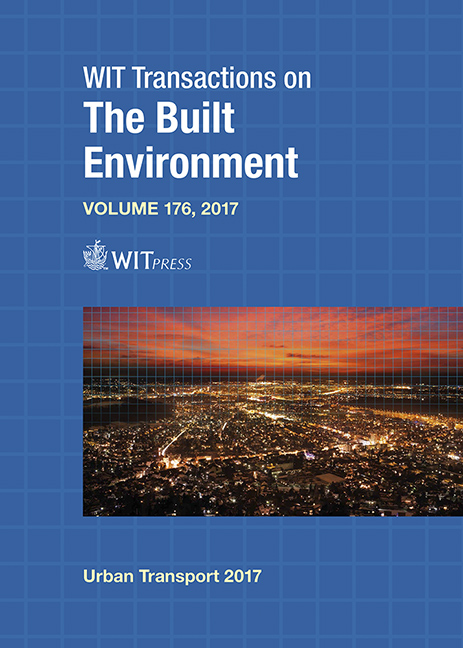TRANSPORTATION PLANNING IN SOUTH AFRICA: A FAILURE TO ADJUST
Price
Free (open access)
Transaction
Volume
176
Pages
7
Page Range
27 - 33
Published
2017
Size
211 kb
Paper DOI
10.2495/UT170031
Copyright
WIT Press
Author(s)
DAVID DEWAR
Abstract
The structure and form of South African cities has historically been powerfully informed by two main ideologies: the planning ideology of modernism; and the political ideology of apartheid or separate development. The primary urban spatial patterns resulting from these influences acting in combination are low density sprawl, fragmentation and separation. These in turn, impose enormous costs on society. Sprawl rides roughshod over wilderness and rural landscapes at an alarming rate. The system generates enormous amounts of movement (particularly, car-based) at great cost in terms of household budgets, time loss and productivity, air pollution, greenhouse gas emissions, and so on, Moreover, it is the poor who are primarily disadvantaged. In short, urban structure and form are contributing directly to the primary problems of society: poverty; inequality and unemployment. Since 1994, with the attainment of universal franchise, calls for urban restructuring have been high on the South African political agenda. Despite this, there has been little progress in this regard. A primary factor contributing to this has been the failure of the transportation planning profession, which is the most influential of all the disciplines concerned with the South African built environment, to lead significant change. There are several current practices in particular which negatively impact on settlement performance: a continuation of the dominance of car-based travel; the predictive use of demand-based models which reinforce historically-skewed patterns of settlement, as opposed to using transport as an instrument of urban restructuring; an over-emphasis on limited-access routes which create urban barriers; the imposition of technologies on context where preconditions for successful operation do not exist; a failure to integrate different modes of public transportation; a failure to address transport projects holistically: the issue of land value capture; a total lack of concern about spatial quality – the promotion of ‘road’, not ‘street’. These will be discussed in turn. In the final section, a way forward will be suggested.
Keywords
spatial planning, modernism, apartheid, car-dominance, limited access routes, skewed demand, imposed technologies, non-integration, spatial quality





